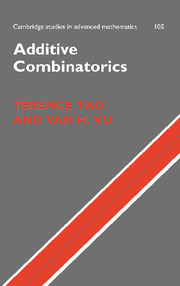Incidence geometry deals with the incidences among basic geometrical objects such as points, lines and spheres. One can obtain useful and non-trivial information on these incidences by the classical combinatorial technique of double-counting the number of a certain type of configuration of incidences in two different ways.
In many situations, tools from from incidence geometry, combined with a clever double counting argument provide a simple, yet powerful, approach to hard problems. The goal of this chapter is to demonstrate several such applications, including several in additive combinatorics.
The material is organized as follows. We start with a result on the crossing number of graphs, which has a topological flavor. Next, we use this result to give simple proof of the famous Szemerédi–Trotter theorem concerning point-line incidences. In the next two sections, we use this theorem to prove several bounds on the Erdős–Szemerédi sum-product problem and reprove Andrew's theorem on the number of lattice points in a convex polygon. Next, we introduce the method of cell decomposition and use it to treat Erdős distinct distances problem in Rd. Finally, we discuss a variant of Erdős–Szemerédi sum-product problem for complex numbers.
The crossing number of a graph
In this chapter, a point refers to a point in the plane R2, and a line refers to a line in R2, unless otherwise specified. By a curve, we refer to the image of a continuous injective embedding of a compact interval [0, 1] into R2.
Consider a graphG = G(V, E); recall we assume our graphs G to be undirected and have no loops or repeated edges.
